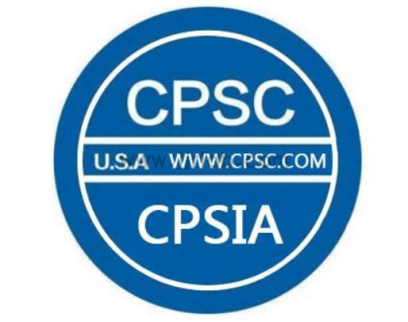
Differences Between CPSIA, CPSC, and CPC
Recently, many clients have been asking: Aren’t CPSC Certification, CPC Certification, and cpsia testing reports all the same thing? To clear up the confusion, here’s a detailed explanation of the differences between cpsia, CPSC, and CPC:

CPSIA, CPSC, and CPC Are Three Distinct Concepts Related to U.S. Product Safety
They differ mainly in the following aspects:
1. Nature
CPSIA:
The Consumer Product Safety Improvement Act, a U.S. law that outlines safety standards and testing requirements for children's products.
CPSC:
The Consumer Product Safety Commission, an independent U.S. government agency responsible for protecting consumers from potential harm caused by consumer products.
CPC:
The Children’s Product Certificate, a certificate issued by a CPSC-accredited third-party laboratory after testing a product according to CPSIA requirements, verifying the product meets safety standards.
2. Responsible Authority
CPSIA:
Enforced and overseen by the CPSC.
CPSC:
As an agency, it does not perform tests or issue certifications directly but authorizes third-party labs to do so and reviews the test data.
CPC:
Issued by third-party labs accredited by the CPSC, which ensures accuracy and reliability through strict oversight.
3. Scope of Application
CPSIA:
Applies to all consumer products, especially children’s products, which must comply with defined safety standards.
CPSC:
Oversees all consumer products, particULarly children's items, ensuring they are free from harmful substances like lead and phthalates.
CPC:
Specifically targets children's products. This certificate is required for products to enter the U.S. market, confirming that they’ve passed rigorous safety testing.
What Is CPC Certification?
The Children’s Product Certificate (CPC)is issued based on test results from a CPSC-accredited third-party laboratory. It applies to all products intended primarily for children aged 12 and under — such as toys, cribs, children’s clothing, etc.
If the product is manufactured in the U.S., the manufacturermust provide the CPC.
If the product is manufactured abroad, the importermust provide it.
For cross-border sellers, this means if you are importing products manufactured in China to sell on U.S. platforms like Amazon, you (as the importer) are required to present a CPC certificate.
What Tests Are Included in CPC Certification?
CPC certification typically includes:
CPSIA: Testing for leadand phthalates
ASTM F963: U.S. toy safety standard developed by the National Institute of Standards and Technology (latest version: astm f963-17)
Key Testing Areas:
1. Physical and mechanical safety (e.g., sharp edges, protrusions, fasteners)
2. Flammability
3. Toxicity (hazardous substances)
Overview of CPSIA Requirements
The CPSIA, signed into law on August 14, 2008, by President George W. Bush, is one of the most stringent consumer protection acts since the CPSC's creation in 1972. Known as HR4040, it outlines critical safety regulations:
Section 101: Lead content in children’s products
Section 102: Mandatory third-party testing for certain children’s products
Section 103: Tracking labels for children’s products
Section 104: Standards for durable infant products and consumer registration
Section 105: Labeling requirements for toys and game advertisements
Section 106: Mandatory Toy Safety Standards
Section 107: Study on preventable injuries and fatalities related to children’s products
Section 108: Ban on certain phthalate-containing products
CPSIA is a regulatory standard that sets the bar for product quality and safety.
Enforcement Update: March 22, 2021
As of March 22, 2021, the CPSC began electronic entry reviews, significantly increasing scrutiny on children's products. Many Amazon sellers have since been required to provide cpc testing reports.
Any products under CPSC jurisdiction may be flagged for inspection. If you are selling such products, it’s vital to prepare all relevant documents in advance, including CPC test reports and certifications, for U.S. customs clearance.
Summary
CPSIA: A regulation that defines safety standards and testing requirements for children’s products.
CPSC: A U.S. government agency that enforces those safety standards.
CPC: A certificate issued by a CPSC-accredited third-party lab, verifying that the product complies with CPSIA safety requirements.
To ensure smooth entry into the U.S. market — especially for children’s products — manufacturers and importers must comply with CPSIAand obtain a CPC certificatethrough CPSC-accredited testing laboratories.
Email:hello@jjrlab.com
Write your message here and send it to us
 Differences Between FDA and LFGB for Food Contact
Differences Between FDA and LFGB for Food Contact
 Process and Precautions for Amazon CPC Certificate
Process and Precautions for Amazon CPC Certificate
 E-mark Certification Testing Service Laboratory
E-mark Certification Testing Service Laboratory
 Amazon ISO/IEC 17025 UL Testing Service Laboratory
Amazon ISO/IEC 17025 UL Testing Service Laboratory
 How to get CE Certification for Lighting Products?
How to get CE Certification for Lighting Products?
 CE Certification Standards & Process for Elect
CE Certification Standards & Process for Elect
 Japan METI Registration & Japanese Agent Servi
Japan METI Registration & Japanese Agent Servi
 Temperature Shock Test (IEC 60068-2-14:2009)
Temperature Shock Test (IEC 60068-2-14:2009)
Leave us a message
24-hour online customer service at any time to respond, so that you worry!




